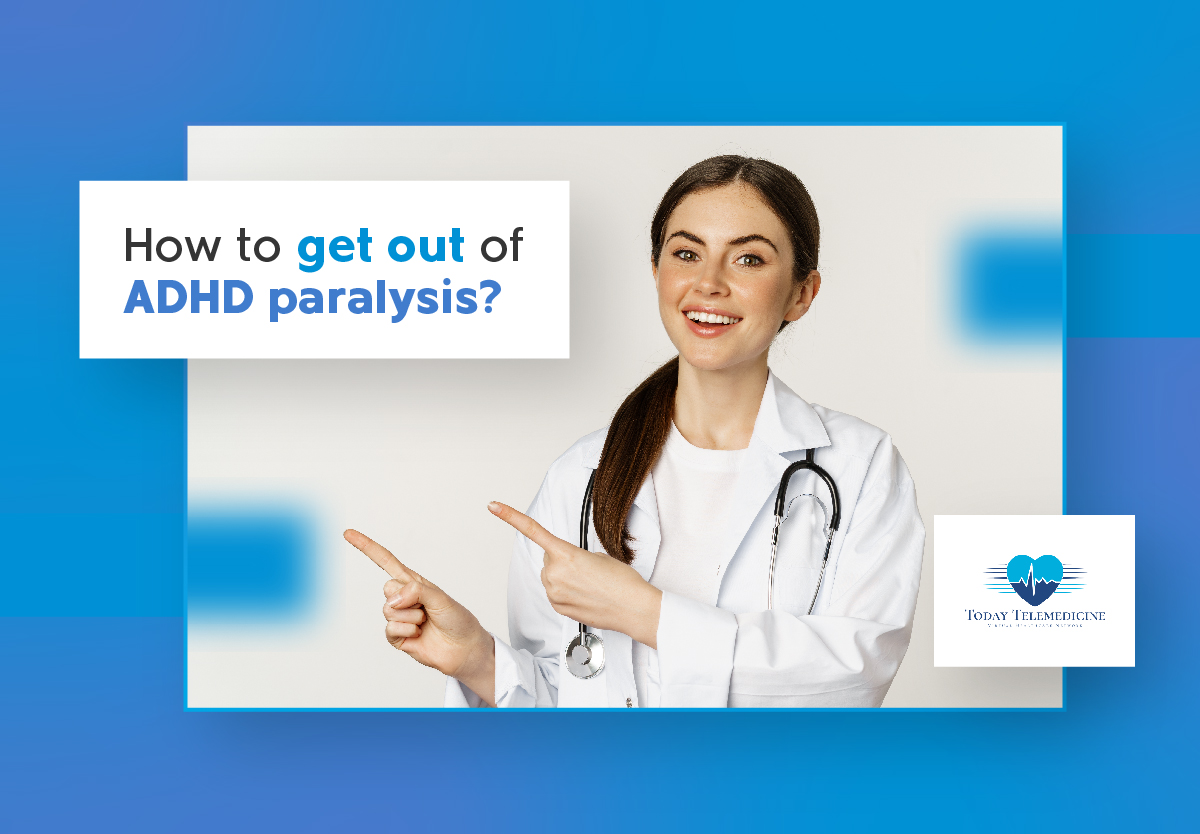How to Deal with ADHD Paralysis?
Did you know? What is task paralysis?
People with Attention Deficit Hyperactivity Disorder (ADHD) often experience ADHD paralysis, which is also known as “task paralysis.”
It is hard to start or finish tasks when you have this condition, even if they are important or have due dates.
The paralysis can be caused by having too many things to do, wanting to do everything perfectly, or having trouble setting priorities.
We will look at useful tips for how to get out of ADHD paralysis?
Sarah Purdy, a psychiatrist in Florida, will help you manage your ADHD medications at Today Telemedicine.
Understanding ADHD Paralysis
When the brain is too busy trying to focus, organize, or set priorities, this is called ADHD paralysis.
If you cannot get started on a task, switch between tasks without finishing them, or feel mentally “stuck,” that is a sign of it.
The first thing that needs to be done to get over ADHD paralysis is to recognize the signs of it.
What is ADHD Shutdown?
A person with ADHD who is having a shutdown may feel like they are deeply stuck.
The brain seems to take a short break, making us feel like we cannot move forward, make choices, or talk to other people.
It happens when we are so stressed out that we feel like we cannot do the things we normally do. It keeps us from doing what we need or want to do.
- Difficulty Starting Tasks
ADHD trouble starting tasks, even when they are important or have clear due dates, is one of the most obvious signs of ADHD paralysis.
People may find themselves putting off or avoiding the task altogether.
- Feeling Overwhelmed
It is easy to feel overwhelmed when tasks seem impossible to complete.
This feeling usually comes from not knowing how to begin or how to divide the job into steps that are easier to handle.
- Jumping Between Tasks
People with ADHD paralysis may start a lot of things but never finish any of them.
They frequently switch from one task to another without making significant progress on any of them, which means they do not get anything done.
- Perfectionism
People may not start or finish a task because they are afraid of making mistakes or not doing it perfectly.
People who are too focused on being perfect can really slow things down and stop them from getting things done.
- Poor Time Management
People who have ADHD paralysis often have trouble keeping track of their time. They might not think tasks will take as long as they do or not give themselves enough time to finish them, which can lead to last-minute scrambling or missing deadlines.
- Easily Distracted
Does paralysis break concentration?
One common sign is being easily distracted. People may find it hard to stay focused on a single task because they are easily distracted by outside stimuli or thoughts that are not related to the task.
- Procrastination
People who have ADHD paralysis often put things off for a very long time. Problems setting priorities or being too busy with all the steps that need to be taken are common reasons for this delay in starting or finishing a task.
- Mental Exhaustion
It can be mentally and physically exhausting to constantly struggle to keep up with tasks and stay focused.
This can make it even harder to start or finish tasks, which can lead to a vicious cycle.
- Negative Self-Talk
ADHD feel like a failure, people may criticize themselves for not being able to finish tasks when they are negative with themselves.
This can lower your self-esteem and make you feel like you have failed or are not good enough.
- Difficulty Prioritizing
It can be hard to choose which tasks to do first. People may have trouble putting tasks in order of how important and urgent they are, which can make them unable to decide what to do or take action.
- Avoidance Behaviors
People may avoid starting tasks because they are stressful and anxious, so they might do things like spend too much time on social media, play video games, or do other things that are not helpful.
ADHD not seeing things in front of you even it is most important.
How to Get Out of ADHD Paralysis
- Break Tasks into Smaller Steps
Large tasks can be daunting. It can be easier to handle things if you break them down into smaller steps.
For example, instead of “write a report,” break it into steps like “outline the report,” “research key points,” and “write the introduction.”
- Use Timers and Schedules
Using a timer can help to create a sense of urgency and focus. You can try the Pomodoro Technique, which has you work for 25 minutes and then take a 5-minute break.
Setting specific times to do things can also help you stay on track and give you structure.
- Prioritize Tasks
Not all tasks are equally important. Determine their order of importance using a system like the Eisenhower Matrix, which divides tasks into four groups urgent and important, important but not urgent, urgent and not important, and neither urgent nor important. Do the most important things first.
- Set Clear, Achievable Goals
Setting goals that are clear and easy can help you stay motivated and on track.
SMART goals (Specific, Measurable, Achievable, Relevant, Time-bound) will help you figure out what you need to do and how long you have to do it.
- Create a Positive Environment
The things around you can greatly affect your ability to concentrate.
Create an organized workspace free of distractions. This could mean getting rid of clutter, using headphones that block out noise, or having all the materials you need on hand.
- Practice Mindfulness and Relaxation Techniques
Mindfulness and relaxation exercises can help lower the stress and anxiety that can make ADHD worse.
Deep breathing, yoga, and other practices can help you concentrate and think more clearly.
- Ask for help
Help from friends, family, or professionals should not be avoided. Sometimes, talking about a task with someone else can give you new ideas and drive.
Therapists and coaches who work with people who have ADHD can also give you advice that is tailored to your needs.
Conclusion, How to get out of ADHD paralysis?
Having ADHD paralysis can be hard to deal with, but it can be done with the right tools.
Focus and productivity can be improved by breaking tasks down into smaller steps, using timers and schedules, setting clear priorities, and making the environment more positive.
It can also help a lot in using tools and apps, practicing mindfulness, and asking for help from other people.
Remember that it is important to find what works best for you and that sticking with it will help you get past ADHD paralysis and reach your goals.
FAQs
How to deal with ADHD paralysis?
If you want to avoid ADHD paralysis, start small and take your time with big tasks.
No matter how small the task is, crossing it off your list can make you feel like you have accomplished something.
It is also easier to plan breaks when you break down big goals into smaller tasks.
Why ADHD trouble starting tasks?
ADHD changes the way the brain’s executive function works. That means it is harder for people to understand what they know and decide what to do with it.
If you have ADHD and cannot decide what to do or where to start, you have paralysis.
Is chewing on things a sign of ADHD?
Yes, chewing on things can be a sign of ADHD. It is a form of sensory seeking behavior that some individuals with ADHD use to help focus, manage anxiety, or self-soothe.





